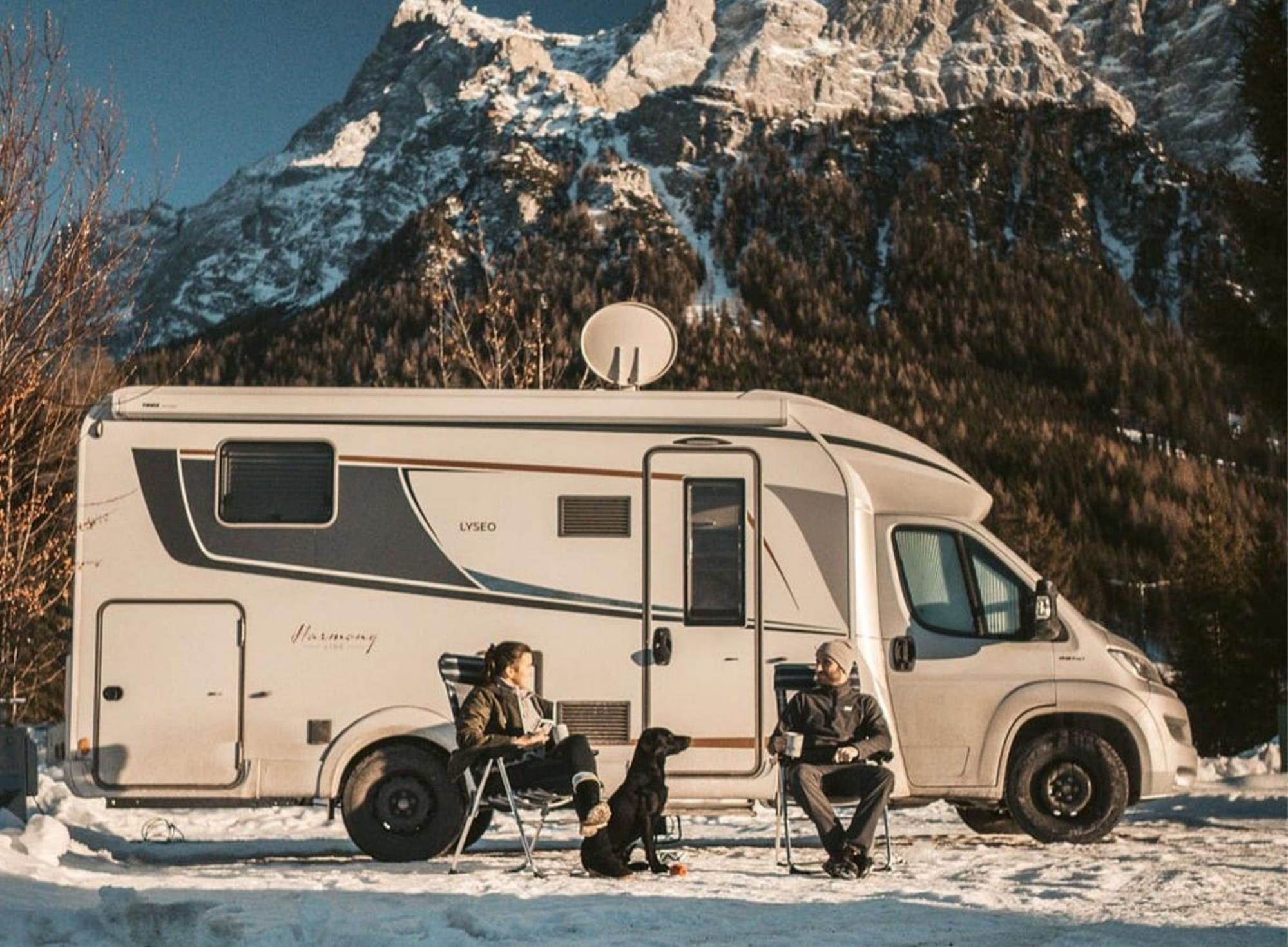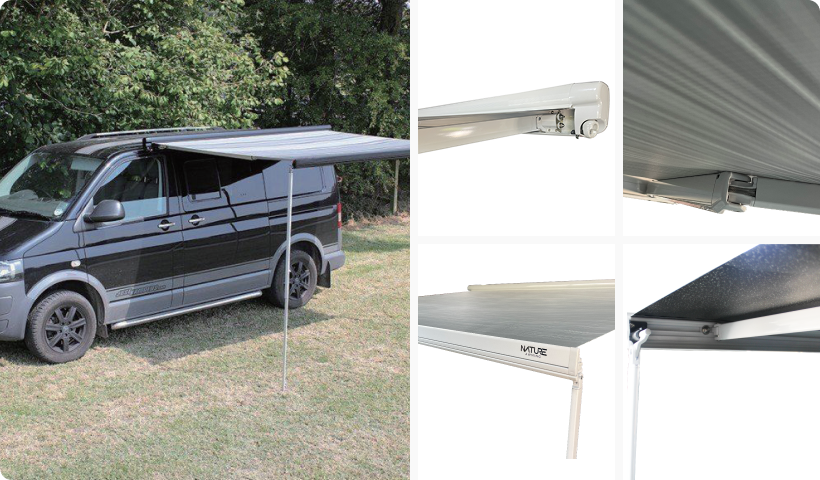Get in Touch with Us!
How to Install an RV Awning

Introduction
An RV awning is an essential accessory for enhancing your outdoor comfort and extending your living space while traveling. Whether you're camping, tailgating, or simply relaxing by your RV, an awning provides essential shade, protection from light rain, and a more inviting outdoor environment. Installing an RV awning correctly is crucial to ensure durability, functionality, and safety. Mistakes during installation can lead to leaks, unstable support, or even damage to your RV. This comprehensive guide outlines each step for successfully installing an RV awning, from preparation to final touches. By following these instructions carefully, you can enjoy the benefits of an RV awning without the stress of common installation mistakes.
.png)
Step 1: Choose the Right RV Awning
Choosing the appropriate RV awning is the foundation of a successful installation. Various awning types cater to different needs, each with distinct benefits:
- Manual Awnings: Operated by hand, these are budget-friendly but require physical effort to extend and retract. They are known for their simplicity and lower maintenance needs, making them ideal for those who prefer a hands-on approach.
- Electric Awnings: Featuring motorized control for easy deployment, these models are ideal for those seeking convenience. Electric awnings often come with remote controls or even wind sensors that automatically retract the awning during strong gusts.
- Retractable Awnings: These awnings roll up when not in use, protecting the fabric from weather damage and reducing wear and tear. They provide flexibility for varying weather conditions.
- Fixed Awnings: Permanently mounted and provide constant shade. While they offer less flexibility, they are ideal for those who frequently park their RV in the same location.
Key Factors to Consider:
- Size: Measure your RV's mounting space to ensure a proper fit. Consider the space you want to shade and match the awning's dimensions accordingly.
- Material: Vinyl awnings are durable, waterproof, and easy to clean, making them perfect for rainy conditions. Acrylic awnings offer breathability, which reduces heat buildup under the awning, ideal for warmer climates.
- UV Protection: High-quality awnings often include UV-resistant coatings, which help extend the fabric's lifespan by minimizing sun damage.
- Ease of Use: Electric awnings provide effortless control with features like automatic retraction. Manual awnings require manual cranking but are more affordable.
Step 2: Preparation for Installation
Proper preparation is essential for a smooth installation process. Carefully gathering tools and measuring your RV’s mounting area will reduce the risk of misalignment and ensure everything fits securely.
Tools Needed:
- Power drill and appropriate drill bits
- Measuring tape for accurate measurements
- Screwdriver set (manual or electric)
- Sealant (preferably waterproof and UV-resistant)
- Ladder for safe access to elevated areas
- Level to confirm alignment
- Marker or chalk to mark mounting points
- Safety gear such as gloves and protective eyewear
Preparation Steps:
Park Your RV on Level Ground: Ensuring your RV is stable prevents shifting during installation.
Clean the Installation Area: Remove any dirt, dust, or debris from the mounting surface. This ensures a clean contact point for brackets and sealant.
Measure the Mounting Space: Carefully measure the width where your awning will be installed. Mark the points for mounting brackets to ensure alignment.
Check Awning Instructions: Each awning model has unique mounting specifications. Review the included guide for specific spacing details and recommended bracket placement.
Step 3: Installing the Awning Hardware
Installing the awning hardware correctly ensures your awning remains secure during use and travel. Follow these steps carefully:
- Mark the Mounting Points: Using a marker or chalk, draw lines where the awning rail will be secured. Align these marks with your previously measured points.
Attach the Awning Rail:
- Align the rail with your markings and drill pilot holes along the designated points.
- Carefully secure the rail using screws, ensuring each is tightly fastened.
- Apply waterproof sealant along the edges of the rail to prevent leaks. Be generous with sealant in areas prone to water exposure.
Install the Mounting Brackets:
- Place brackets on both ends of the awning rail and along the middle (if required by the manufacturer).
- Secure brackets using screws, ensuring they are tightened firmly to stabilize the structure.
Step 4: Mounting the Awning Roller Tube
The roller tube is the backbone of your awning system, housing the fabric and allowing smooth extension and retraction.
With the help of an assistant, lift the roller tube into place. Ensure both ends are properly aligned with the brackets.
Carefully insert the roller tube into the mounting brackets.
Secure the roller tube by fastening the designated screws to hold it firmly in place.
Confirm that the roller tube rotates freely without resistance. Lubricate moving parts if needed to improve motion.
Step 5: Attaching the Awning Fabric
Properly installing the awning fabric ensures durability and smooth operation.
Insert the awning fabric’s bead into the channel of the awning rail.
Slowly slide the fabric along the rail, ensuring it remains straight and even. An assistant can help guide the fabric while you manage alignment.
Once the fabric is fully inserted, secure both ends with end caps to prevent shifting.
Adjust the tension on the roller tube to ensure smooth extension and retraction. Tightening or loosening the tension may be necessary depending on the manufacturer’s instructions.
Step 6: Testing the Awning
Testing ensures your awning is operational and properly installed:
- Extend the Awning Fully: Slowly deploy the awning to confirm the fabric rolls out smoothly without wrinkles.
- Check for Misalignment: Ensure the fabric is even on both sides. If misaligned, adjust the roller tube accordingly.
- Test the Tension: Verify that the awning maintains sufficient tension to prevent sagging.
- Secure the Awning: Retract the awning to confirm the roller tube locks securely into place.
Step 7: Sealing and Final Touches
To improve durability and weather resistance:
Apply waterproof sealant around all mounting points and brackets.
Inspect the structure for gaps or unsealed areas and apply additional sealant as needed.
Consider installing optional accessories such as LED lights, wind sensors, or tie-down straps for added functionality and stability.

Maintenance Tips for Longevity
Proper maintenance will extend your RV awning’s lifespan. Follow these best practices:
- Clean the Fabric Regularly: Use mild soap and water to remove dirt, mildew, and stains.
- Inspect Hardware: Periodically check brackets, screws, and moving parts for rust or wear.
- Retract the Awning Before Traveling: Always roll up the awning to prevent wind damage while driving.
- Store in Severe Weather: If you expect strong winds, heavy rain, or snow, retract or remove the awning to protect it from damage.
Common Mistakes to Avoid
Avoiding these errors will improve your installation process and prevent damage:
- Incorrect Measurements: Failing to measure accurately can result in misaligned brackets and unstable mounting.
- Skipping Sealant Application: Omitting sealant invites leaks and structural instability.
- Over-Tightening Screws: Excessive tightening can crack mounting brackets or damage your RV’s exterior.
- Neglecting Maintenance: Without regular cleaning and inspection, your awning may deteriorate faster than expected.
Conclusion
Installing an RV awning is a rewarding project that enhances your outdoor comfort and maximizes your RV’s functionality. By following these detailed steps, ensuring accurate measurements, and conducting proper maintenance, you’ll enjoy a durable and reliable awning for years to come. With the right tools and careful preparation, you can confidently install your RV awning and create the perfect shaded space for your outdoor adventures.
Are you ready to take your RV camping experience to the next level? At NATURE AWNING, we specialize in crafting premium RV awnings that combine durability, ease of use, and stylish design to create the perfect outdoor living space. Whether you're planning a weekend getaway or a long-term road trip, our awnings provide the shade and comfort you need to enjoy every moment.

.png)